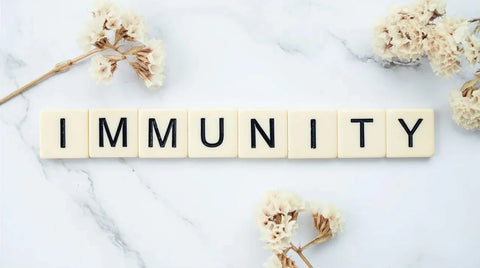Although iron often gets a bad rap, maintaining a normal iron level is important for many aspects of good health. While too much iron can be a problem for some people, too little iron can be a problem, too. Let's look at the reasons—besides building blood to prevent iron deficiency anemia—why your body needs iron.
1. Iron is important for your immune system*
Many people think that iron is bad for immune health because they’ve heard that the body naturally sequesters iron (takes it out of circulation) during an active infection. While this is true, there’s more to the story. If you don’t have enough iron, your body can’t produce important immune cells, like T lymphocytes. 1 Other immune cells, like neutrophils, require iron to function normally, so if your iron levels are too low, your immune system may not function as well when you need it to. 2*
2. Iron is part of what keeps your muscles healthy*
Iron-containing molecules play a critical role in transporting oxygen to where it is needed. You’re probably familiar with hemoglobin—the molecule in your blood that picks up oxygen and carries it to where it’s needed in your body. Less well-known is myoglobin.
Myoglobin holds and transports iron in your muscles (skeletal muscles and heart/cardiac muscle) so that there is enough iron available when you need your muscles to work.* If you don’t have adequate iron, you can’t get enough oxygen to your muscles.3*
3. You need iron for healthy hair *
While there are many reasons why people lose their hair, when it comes to nutrition, iron is the single nutrient most often linked to hair loss.* Low iron, even without anemia, was first linked to hair loss in the early 1960s—so the knowledge isn’t new, but it’s probably not well-known yet. The type of hair loss linked to iron deficiency is called telogen effluvium—which occurs when more hair on your head is falling out (telogen) than growing—and is especially associated with hair loss in women.*
4. Men can also be low in iron
It’s a common myth that only women can have low iron levels. While iron deficiency is definitely more common in women (20 percent of women will experience it at some point in their lives), men can also have low iron levels.5
Population studies indicate that 2% of adult men have low iron levels. The most common cause in men is blood loss due to some type of gastrointestinal condition, such as an ulcer. But low dietary iron levels (as may occur in vegetarians or vegans) can also be a cause. Other risk factors in men may include obesity, overuse of anti-inflammatory medications, ethnicity, and older age.
5. Iron actually has some antioxidant functions
Perhaps because excess iron is associated with increased oxidative damage, it is often overlooked that iron also plays a role in healthy antioxidant function.* Catalase is an iron-containing enzyme that protects cells from damage caused by peroxides. In addition to transporting oxygen, hemoglobin has been shown to act as an antioxidant in red blood cells;6 however, when released from damaged cells, iron can also cause oxidative damage. This dual role of iron in oxidative health* is one reason why it is important to keep your iron levels neither too high nor too low.
References:
1 - Ward R, Crichton R, Taylor D, et al. Iron and the immune system. J Neural Transm Vienna Austria 1996 2010;118:315-328. doi:10.1007/s00702-010-0479-3
2 - Bhaskaram P. Immunobiology of mild micronutrient deficiencies. Br J Nutr 2001;85 Suppl 2:S75-S80. doi:10.1079/bjn2000297
3 - Neidlein S, Wirth R, Pourhassan M. Iron deficiency, fatigue and muscle strength and function in older hospitalized patients. Eur J Clin Nutr Published online September 8, 2020:1-8. doi:10.1038/s41430-020-00742-z
4 - Rushton D. Nutritional factors and hair loss. Clin Exp Dermatol 2002;27(5):396-404. doi:10.1046/j.1365-2230.2002.01076.x
5 - Killip S, Bennett J, Chambers M. Iron deficiency anemia. Am Fam Physician 2007;75(5):671-678.
6 - Vitturi D, Sun C, Harper V, et al. Antioxidant functions for the hemoglobin β93 cysteine residue in erythrocytes and in the vascular compartment in vivo. Free Radic Biol Med 2013;55. doi:10.1016/j.freeradbiomed.2012.11.003



Comments (0)
There are no comments for this article. Be the first one to leave a message!